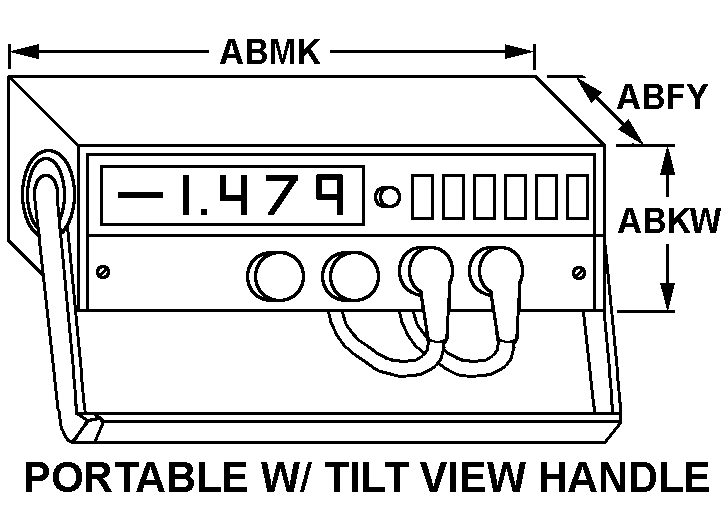6625015456014
Price Quote Get an up to date pricing and availability quote for this product. Order online or over the phone.
Quality Commitment
Serving our customers with quality and safety first.
- AS9120 Certified
- Audited supply chain
- ITAR Registered
- DDTC Registered
- HAZMAT Certified
- Customer service objectives
- Every product 100% inspected

6625-01-545-6014 Specification Set by the OEM (see RNCC code 3)
64.0 mm
169.0 mm
256.0 mm
power quality analyzer 1; decal set 1; hand strap 1; alligator clips 5; 2.5 m test leads 5; battery charger/power adapter 1; line plug adapter 1; starter manual 1; optical cable for usb 1; ac current clamps 4; hard case C430 1
digital display
hand held
-1.0/+1.0 at full scale single indicator single range
external
liquid crystal
terminal
fluke 435 3 phase power quality analyzer
real time trouble shooting; 600 v cat iv/1000 v cat iii safety rating; auto transient mode; fully class a compliant; measures all 3 phases and neutral; IN-Rush mode; logger function; view graphs and generate reports; measures vrms, arms, vcursor, acursor, vfund, afund, hz, v phase angles, and a phase angles
portable w/tilt view handle
Cross Reference Parts Part numbers that meet the specification outlined on this page and set by the OEM
Identification Item Identification Guide (IIG) and Item Name Code (INC)

Definition Definition of approved item name (AIN): "MULTIMETER"
An instrument which is arranged to measure two or more different electrical quantities (such as volts, amps, and ohms) by means of associated circuits and switches. The value is usually expressed on a single calibrated dial or digital readout display. For items which are connected into a circuit and used chiefly to visually monitor an operation, see meter, multiple scale. See also counter, electronic, digital readout. Excludes bridge (as modified).
6625-01-545-6014 Material Hazmat, Precious Metals, Criticality, Enviroment, and ESD
Indicates there is no information in the hmirs. The nsn is in a fsc in table ii of fed std 313 and a msds may be required by the user. The requirement for a msds is dependent on a hazard determination of the supplier or the intended end use of item.
Item does not contain precious metal.
No known electrostatic discharge (esd) or electromagnetic interference (emi) sensitivity.
Represents items with no adp components
The item does not have a nuclear hardened feature or any other critical feature such as tolerance, fit restriction or application.
Identification Codes
HMIC: Hazardous Material Indicator Code. A one position code that identifies a hazardous item.
PMIC: Precious Metal Indicator Code. A one position code which identifies items that have precious metals as part of their content. precious metals are those metals generally considered to be uncommon, highly valuable, and relatively superior in certain properties such as resistance to corrosion and electrical conductivity.
ESD: Electrostatic Discharge. Indicates if an item is susceptible to electrostatic discharge or electromagnetic interference damage. electrostatic discharge damage occurs when an accumulation of static electricity generated by the relative motion or separation of materials is released to another item by direct contact. electromagnetic interference damage occurs when an item comes into proximity with an electrostatic or magnetic field.
ENAC: Enviromental Attribute Code. Identifies items with environmentally preferred characteristics.
CRITL: Criticality Indicator Code. Indicates an item is technically critical by tolerance, fit, application, nuclear hardness properties, or other characteristics.






